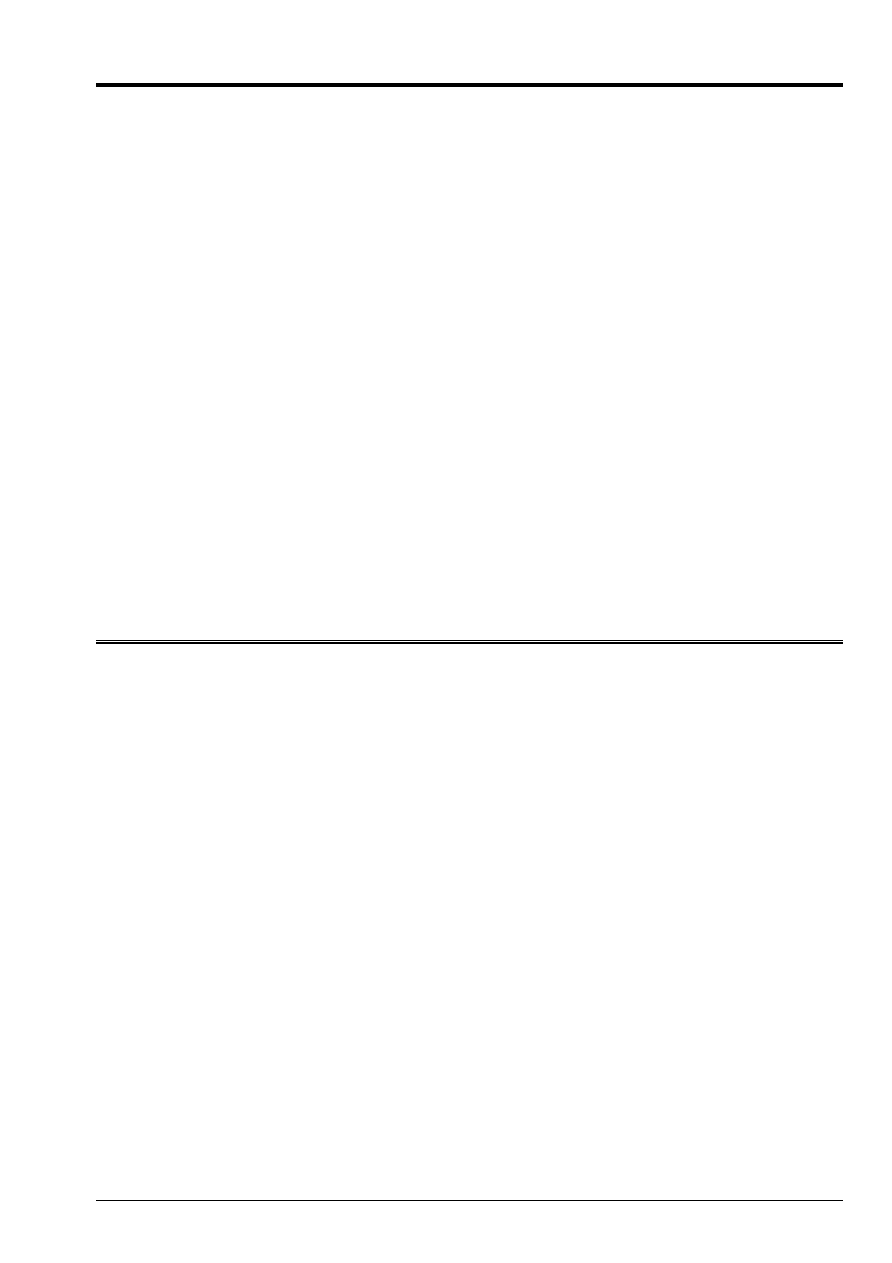
Code_Aster
®
Version
4.0
Titrate:
SDLS03 Plates rectangular thin
Date:
08/01/98
Author (S):
B. QUINNEZ
Key:
V2.03.003-A
Page:
1/8
Manual of Validation
V2.03 booklet: Linear dynamics of the hulls and the plates
HI-75/96/013 - Ind A
Organization (S):
EDF/IMA/MN
Manual of Validation
V2.03 booklet: Linear dynamics of the hulls and the plates
V2.03.003 document
SDLS03 - Thin rectangular plate simply
pressed on the edges
Summary:
This three-dimensional problem consists in seeking the frequencies of vibration of a mechanical structure of type
plate. Two different configurations make it possible to test the modes of vibration in the plan of the plate
(behavior out of membrane) with elastic supports on two opposed edges, and the modes of vibration
in bending of a plate supported on its contour.
This test of mechanics of the structures corresponds to a dynamic analysis of a surface model having one
linear behavior. It comprises two modelings (mesh in triangle or quadrangle).
This problem makes it possible to test the elements of transverse membrane and flexbeam and the calculation of
frequencies of vibration by the method of Lanczos or the method of Bathe and Wilson.
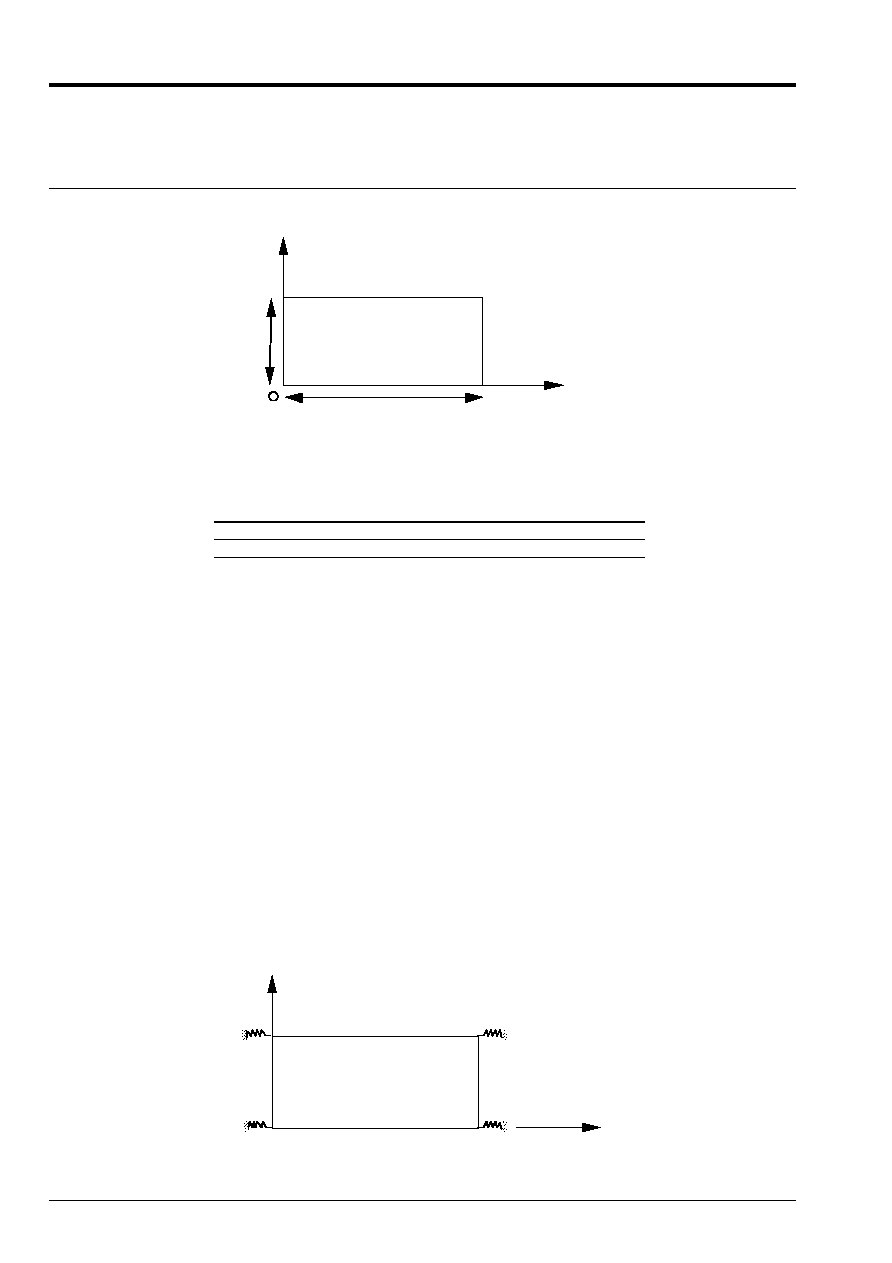
Code_Aster
®
Version
4.0
Titrate:
SDLS03 Plates rectangular thin
Date:
08/01/98
Author (S):
B. QUINNEZ
Key:
V2.03.003-A
Page:
2/8
Manual of Validation
V2.03 booklet: Linear dynamics of the hulls and the plates
HI-75/96/013 - Ind A
1
Problem of reference
1.1 Geometry
y, v
Z, W
has
B
D
C
B
With
X, U
.
That is to say a plate whose characteristics are as follows:
length: = 1.5 m have
width: B = 1 m
thickness: T = 0.01 m
The points characteristic of the plate have as co-ordinates:
With
B
C
D
X
0.
0.
1.
1.
y
0.
1.5
1.5
0.
Z
0.
0.
0.
0.
1.2
Properties of materials
The parameters characterizing the properties of material are:
E = 2.1 10
11
AP
= 0.3
= 7.800 kg/m
3
1.3
Boundary conditions and loadings
1.3.1 Problem of bending
The plate is in simple support on all its sides: for any point P of the edge one a: W = 0.
1.3.2 Problem of membrane
For all the points of the plate, one locks displacement in Z and the three degrees of rotation, it be-with
to say:
W = 0.
X
=
y
=
Z
= 0.
On sides AD and BC one locks displacement in y: for y = 0. or y = have one has v = 0.
To points A, B, C, D one attaches springs of stiffness K. The axis of these springs is direction X.
y
D
C
B
With
X
The numerical value of K is as follows: K = 25 NR/Mr.
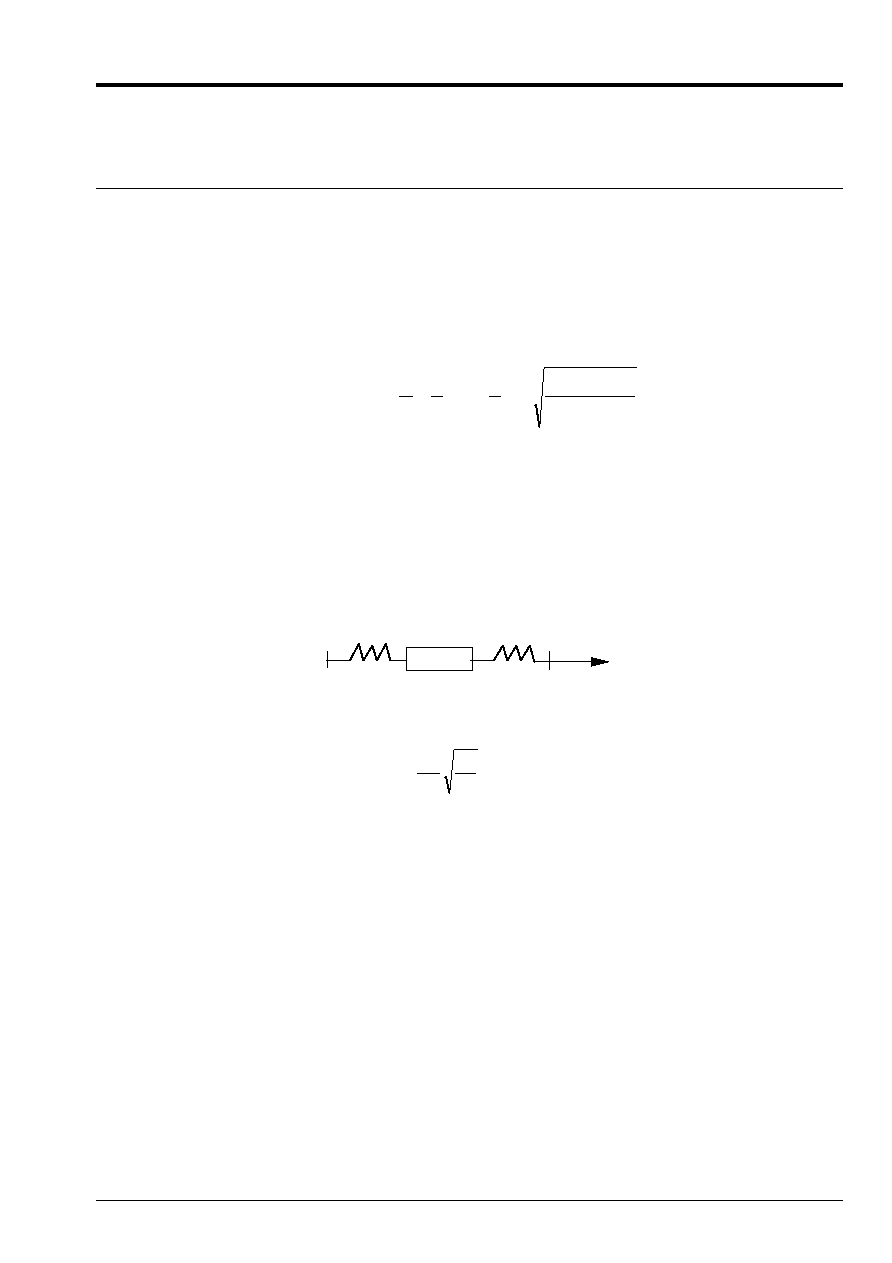
Code_Aster
®
Version
4.0
Titrate:
SDLS03 Plates rectangular thin
Date:
08/01/98
Author (S):
B. QUINNEZ
Key:
V2.03.003-A
Page:
3/8
Manual of Validation
V2.03 booklet: Linear dynamics of the hulls and the plates
HI-75/96/013 - Ind A
2
Reference solution
2.1
Method of calculation used for the reference solution
2.1.1 Problem of bending
The reference solution of the problem of bending is that given in card SDLS03/89 of the guide
VPCS which presents the method of calculation in the following way.
The formulation of Mr. V. BARTON for a rectangular plate, posed on its four sides led
for the modes of bending with:
(
)
F
I
has
J
B
E
T
ij
=
+
2
12
1
2
2
2
4
2
with:
I
= a number of half-length of wave according to y (dimension has),
J
= a number of half-length of wave according to X (dimension b).
2.1.2 Problem of membrane
The problem dealt with out of membrane is equivalent for the search of the first frequency of
vibration with the following unidimensional problem:
2 K
2 K
X
m
where:
K
is the stiffness of the springs,
m
is the mass of the plate.
The sought frequency is thus:
F
K
m
=
1
2
4
2.2
Results of reference
For the problem of bending, one calculates the first six frequencies of vibration and for calculation in
membrane, one calculates only the first frequency.
2.3
Uncertainty on the solution
The solutions being analytical, there is no uncertainty.
2.4 References
bibliographical
[1]
Mr. V. BARTON “Vibrations off rectangular and skew cantilever punts” - Newspaper off Applied
Mechanics, vol. 18, p. 129-134 (1951).
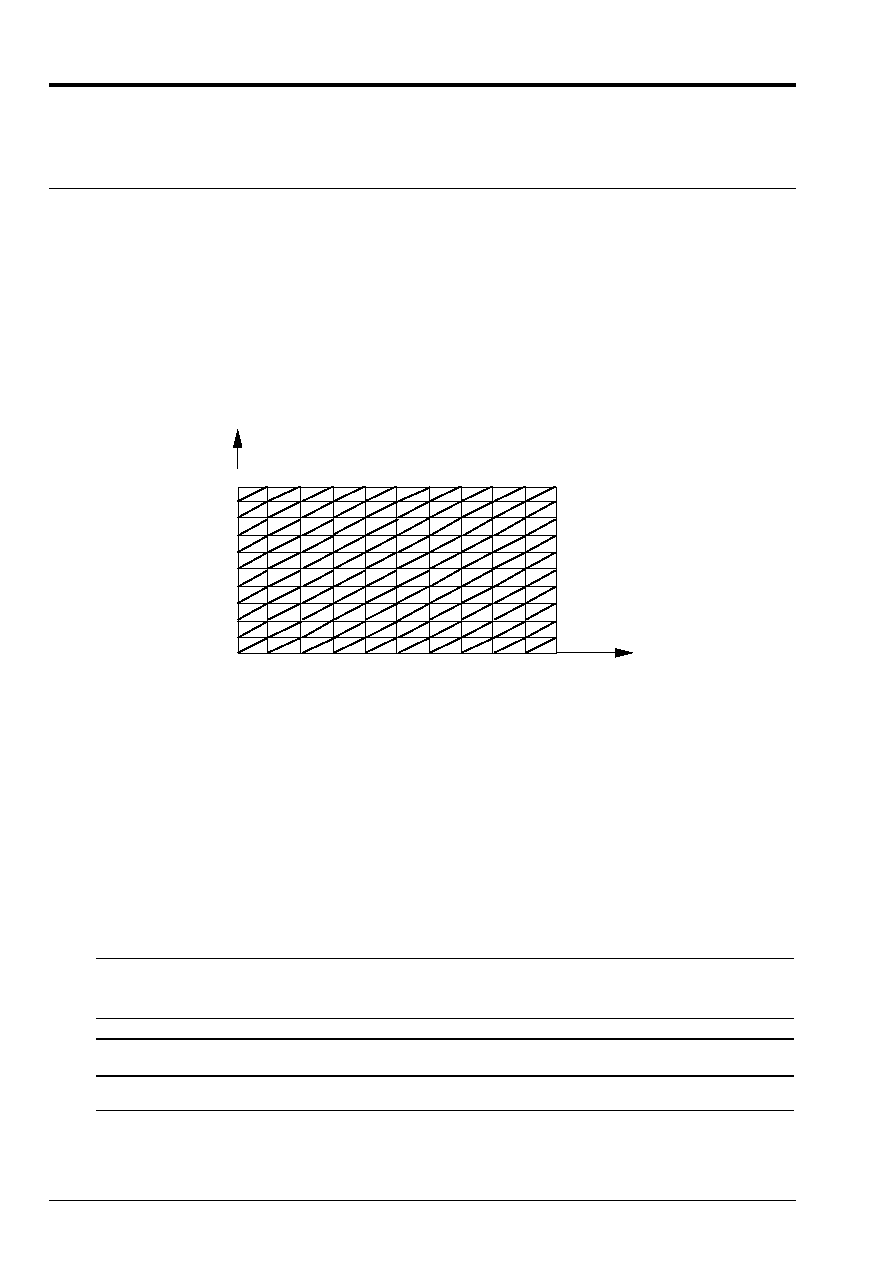
Code_Aster
®
Version
4.0
Titrate:
SDLS03 Plates rectangular thin
Date:
08/01/98
Author (S):
B. QUINNEZ
Key:
V2.03.003-A
Page:
4/8
Manual of Validation
V2.03 booklet: Linear dynamics of the hulls and the plates
HI-75/96/013 - Ind A
3 Modeling
With
3.1
Characteristics of modeling
One cut out the plate in 200 meshs TRIA3. Two modelings for the plate are used: DKT
and DST.
For the problem of bending, the boundary conditions are as follows:
·
in all the nodes of the edge: DZ = 0
For the problem of membrane, the boundary conditions are:
·
in all the nodes of the mesh: DZ = 0 DRX = DRY = DRZ = 0,
·
in all the nodes on the sides AB and BC: DY = 0
·
to points A, B, C, D one adds discrete elements of rigidity (direction X).
111
113
115
117
119
121C
110
99
11
22
33
44
X
B
100
89
With
2
3
4
5
6
7
8
9
10
D
12
23
34
y
1
3.2
Characteristics of the mesh
A number of nodes: 121
A number of meshs and types: 200 TRIA3
The points characteristic of the mesh are as follows:
Not A = N1
Not C = N121
Not B = N111
Not D = N11
3.3 Functionalities
tested
Controls
Keys
AFFE_CARA_ELEM
HULL
ALL
[U4.24.01]
DISCRETE
GROUP_NO
“K_T_D_N'
CARA
AFFE_CHAR_MECA
DDL_IMPO
GROUP_NO
[U4.25.01]
AFFE_MODELE
“MECHANICAL”
'DKT' or “DST”
ALL
[U4.22.01]
“MECHANICAL”
“DIS_T'
MACRO_MATR_ASSE
MATR_ASSE
OPTION
“RIGI_MECA”
[U4.31.02]
“MASS_MECA”
MODE_ITER_SIMULT
METHOD
“TRI_DIAG”
[U4.52.02]
CALC_FREQ
OPTION
“TAPE”
CALC_FREQ
OPTION
“PLUS_PETITE”
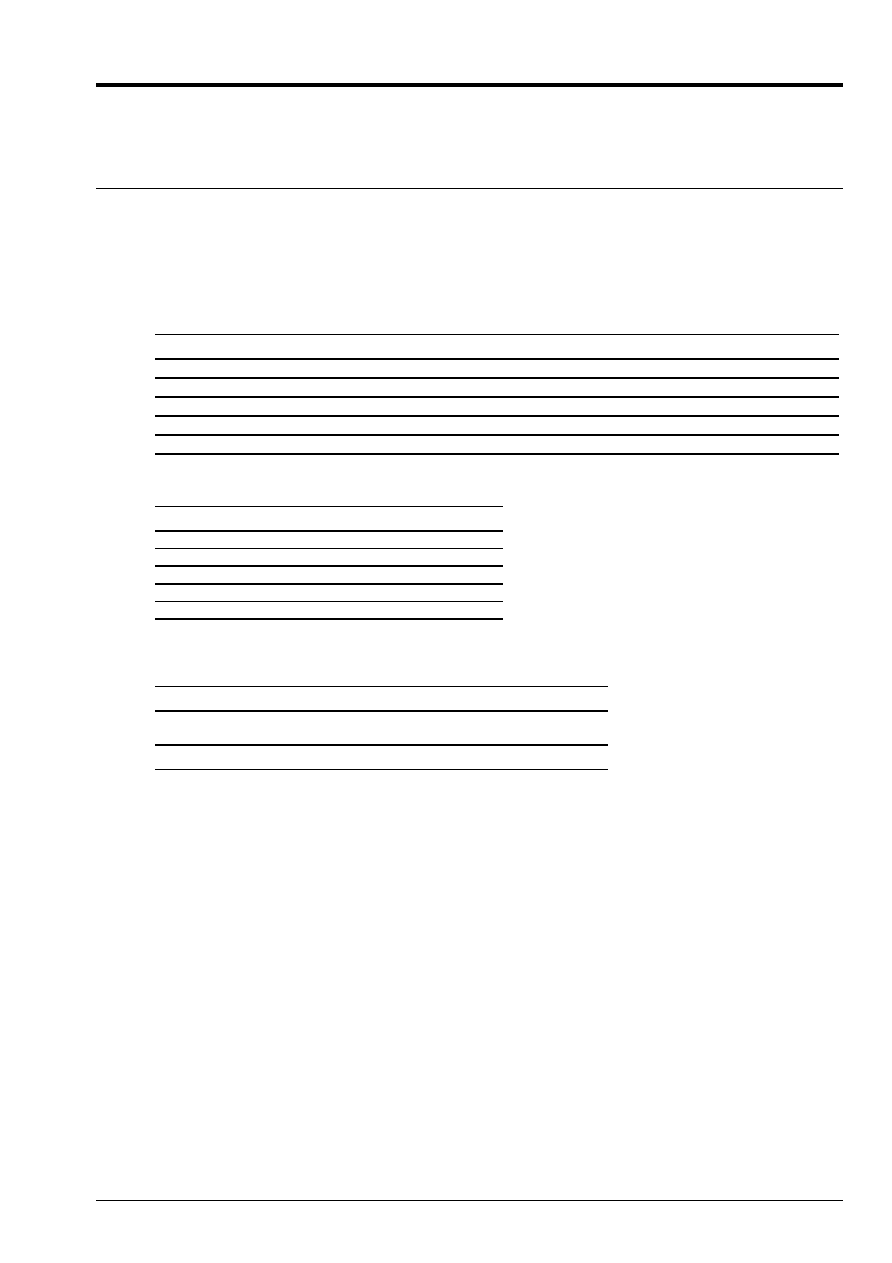
Code_Aster
®
Version
4.0
Titrate:
SDLS03 Plates rectangular thin
Date:
08/01/98
Author (S):
B. QUINNEZ
Key:
V2.03.003-A
Page:
5/8
Manual of Validation
V2.03 booklet: Linear dynamics of the hulls and the plates
HI-75/96/013 - Ind A
4
Results of modeling A
4.1 Values
tested
For the modes of bending:
Number
mode
Frequencies
Reference
Aster
DKT
% diff.
% covered with sheet metal.
4
35.63
35.46
0.477
0.5
5
68.51
67.82
1.003
1.1
6
109.62
108.67
0.867
0.9
7
123.32
121.90
1.150
1.2
8
142.51
139.99
1.761
1.8
9
197.32
191.70
2.846
2.9
Aster
DST
% diff.
% covered with sheet metal.
35.45
0.492
0.5
67.80
1.030
1.1
108.62
0.910
1.
121.84
1.199
1.3
139.92
1.815
1.9
191.57
2.912
3.
For the problem out of membrane:
Reference
Aster
DKT
% diff.
% covered with sheet metal.
0.14714
0.147136
0.002
0.1
Aster
DST
% diff.
% covered with sheet metal.
0.147136
0.001
0.1
4.2 Remarks
For the problem in bending, the modal position of the first mode found in the tape (5., 200.) is
fourth, because there are three modes of solid body at frequency zero:
·
modes of translation U and v in the plan,
·
mode of rotation around axis Z.
4.3 Parameters
of execution
Version: 3.05.18
Machine: CRAY C98
System:
UNICOS 8.0
Overall dimension memory:
8 megawords
Time CPU To use:
25 seconds
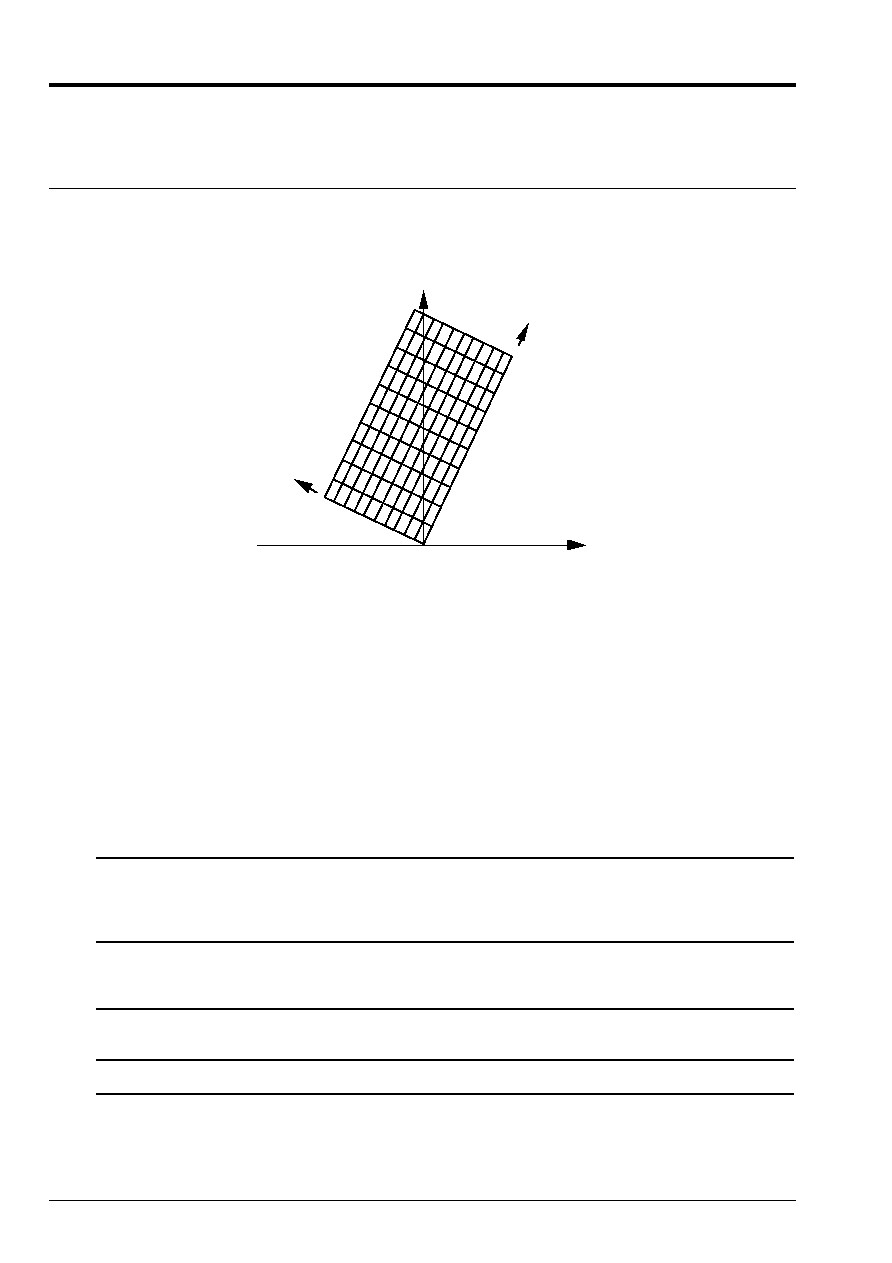
Code_Aster
®
Version
4.0
Titrate:
SDLS03 Plates rectangular thin
Date:
08/01/98
Author (S):
B. QUINNEZ
Key:
V2.03.003-A
Page:
6/8
Manual of Validation
V2.03 booklet: Linear dynamics of the hulls and the plates
HI-75/96/013 - Ind A
5 Modeling
B
5.1
Characteristics of modeling
One cut out the plate in 100 meshs QUAD4.
Three modelings for the plate are used: Q4G, DKT (DKQ), DST (DSQ).
Compared to modeling A, the plate was turned in the plan (O, X, y) of an angle of 60°
111
C121
11
X
With
D
y
B
22
33
1
23
4
12
23
y'
113
115
x'
For the problem of bending, the boundary conditions are as follows:
·
in all the nodes of the edge: DZ = 0
For the problem of membrane, the boundary conditions are:
·
in all the nodes of the mesh: DZ = 0 DRX = DRY = DRZ = 0,
·
with node A, one locks displacement DY in the reference mark (A, x', y'),
·
to points A, B, C, D one adds discrete elements of rigidity (direction x').
5.2
Characteristics of the mesh
A number of nodes: 121
A number of meshs and types: 100 QUAD4
The points characteristic of the mesh are as follows:
Not A = N1
Not B = N111
Not C = N121
Not D = N11
5.3 Functionalities
tested
Controls
Keys
AFFE_CARA_ELEM
HULL
ALL
[U4.24.01]
DISCRETE
GROUP_NO
CARA
“K_T_D_N'
IDENTIFY
“LOCAL”
ORIENTATION
“ANGL_NAUT”
AFFE_CHAR_MECA
DDL_IMPO
GROUP_NO
[U4.25.01]
LIAISON_OBLIQUE
NODE
DY
ANGL_NAUT
AFFE_MODELE
“MECHANICAL”
'Q4G' or “DST”
ALL
[U4.22.01]
or “DKT”
“MECHANICAL”
“DIS_T'
MACRO_MATR_ASSE
MATR_ASSE
OPTION
“RIGI_MECA”
[U4.31.02]
“MASS_MECA”
MODE_ITER_SIMULT
METHOD
“TRI_DIAG”
[U4.52.02]
CALC_FREQ
OPTION
“TAPE” or
“CENTER”
CALC_FREQ
OPTION
“PLUS_PETITE”
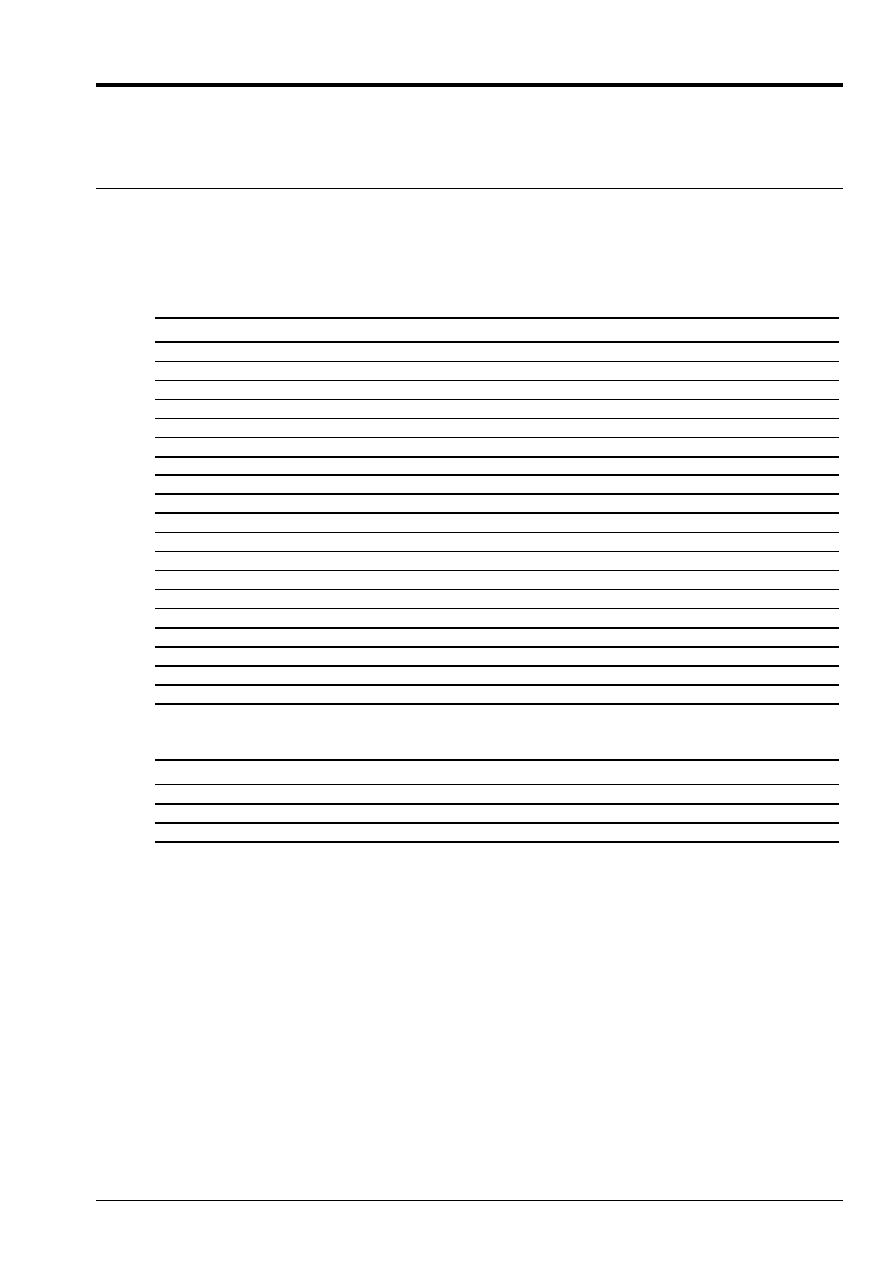
Code_Aster
®
Version
4.0
Titrate:
SDLS03 Plates rectangular thin
Date:
08/01/98
Author (S):
B. QUINNEZ
Key:
V2.03.003-A
Page:
7/8
Manual of Validation
V2.03 booklet: Linear dynamics of the hulls and the plates
HI-75/96/013 - Ind A
6
Results of modeling B
6.1 Values
tested
For the modes of bending:
Number
mode
Frequencies
Reference
Aster
DKQ
% difference
% tolerance
4
35.63
35.359
0.760
0.8
5
68.51
67.491
1.427
1.5
6
109.62
108.563
0.964
1.
7
123.32
121.144
1.765
1.8
8
142.51
138.402
2.882
2.9
9
197.32
188.500
4.470
4.5
Aster
DSQ
4
35.63
35.351
0.782
0.8
5
68.51
67.464
1.527
1.6
6
109.62
108.494
1.027
1.1
7
123.32
121.060
1.832
1.9
8
142.51
138.291
2.961
3.
9
197.32
188.298
4.572
4.6
Aster
Q4G
4
35.63
36.011
1.068
1.1
5
68.51
70.795
3.336
3.5
6
109.62
114.593
4.536
4.6
7
123.32
134.899
9.39
9.4
8
142.51
142.941
4.513
4.6
9
197.32
212.045
7.463
7.5
For the problem out of membrane:
Reference
Aster
% difference
% tolerance
DKQ
0.14714
0.14713
0.003
0.1
DSQ
0.14714
0.14714
0.002
0.1
Q4G
0.14714
0.14714
0.
0.1
6.2 Remarks
For the problem in bending, the modal position of the first mode found in the tape (5., 200.) is
fourth, because there are three modes of solid body at frequency zero:
·
modes of translation U and v in the plan,
·
mode of rotation around axis Z.
6.3 Parameters
of execution
Version: 3.05.18
Machine: CRAY C98
System:
UNICOS 8.0
Overall dimension memory:
8 megawords
Time CPU To use:
40 seconds
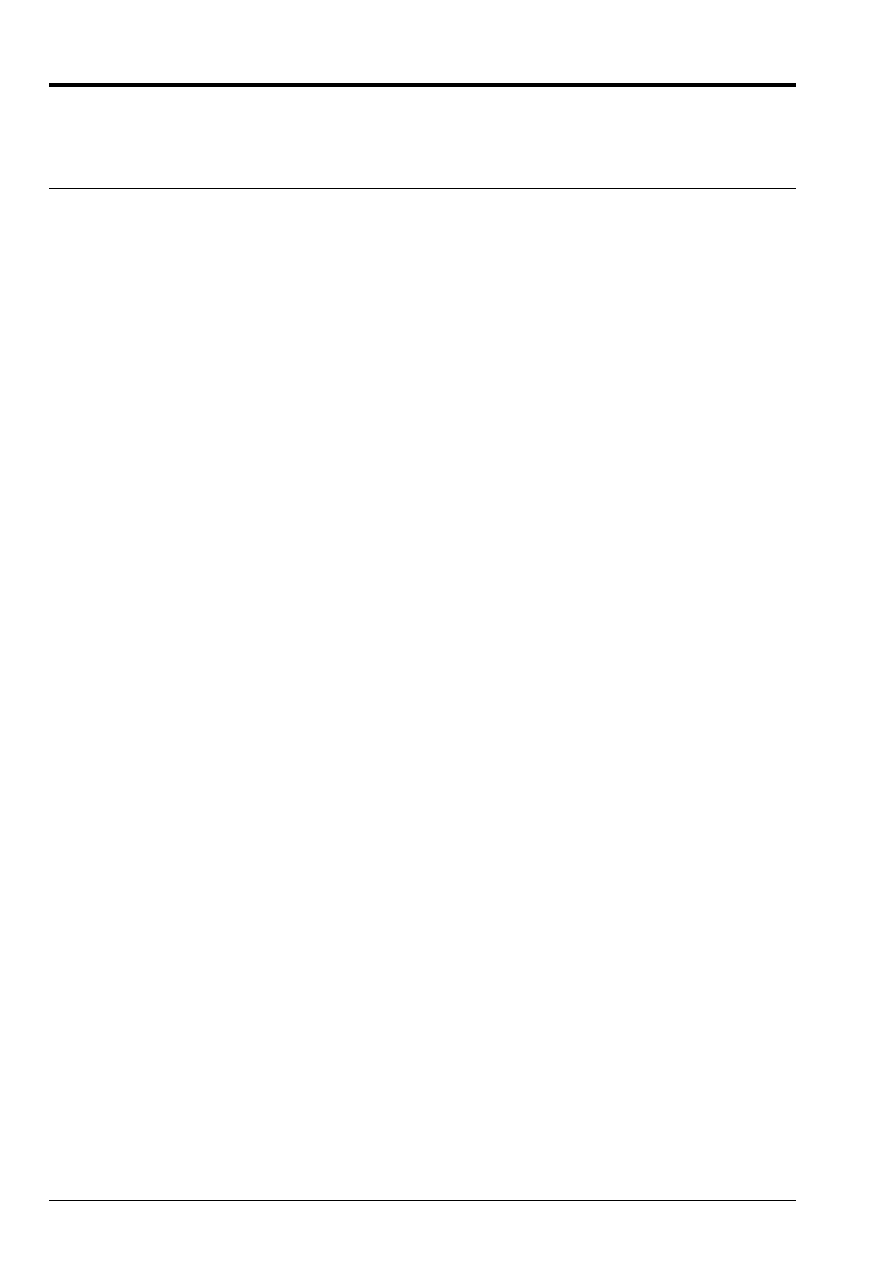
Code_Aster
®
Version
4.0
Titrate:
SDLS03 Plates rectangular thin
Date:
08/01/98
Author (S):
B. QUINNEZ
Key:
V2.03.003-A
Page:
8/8
Manual of Validation
V2.03 booklet: Linear dynamics of the hulls and the plates
HI-75/96/013 - Ind A
7
Summary of the results
The precision, for the modes of bending, remains acceptable on the first six modes. Let us note
however that the precision is worse than in the case of the free plate in space (test
SDLS01 [V2.03.001]).
It is noticed that the processing of the modes of solid body is suitable.
For the test out of membrane, the results are very satisfactory.







